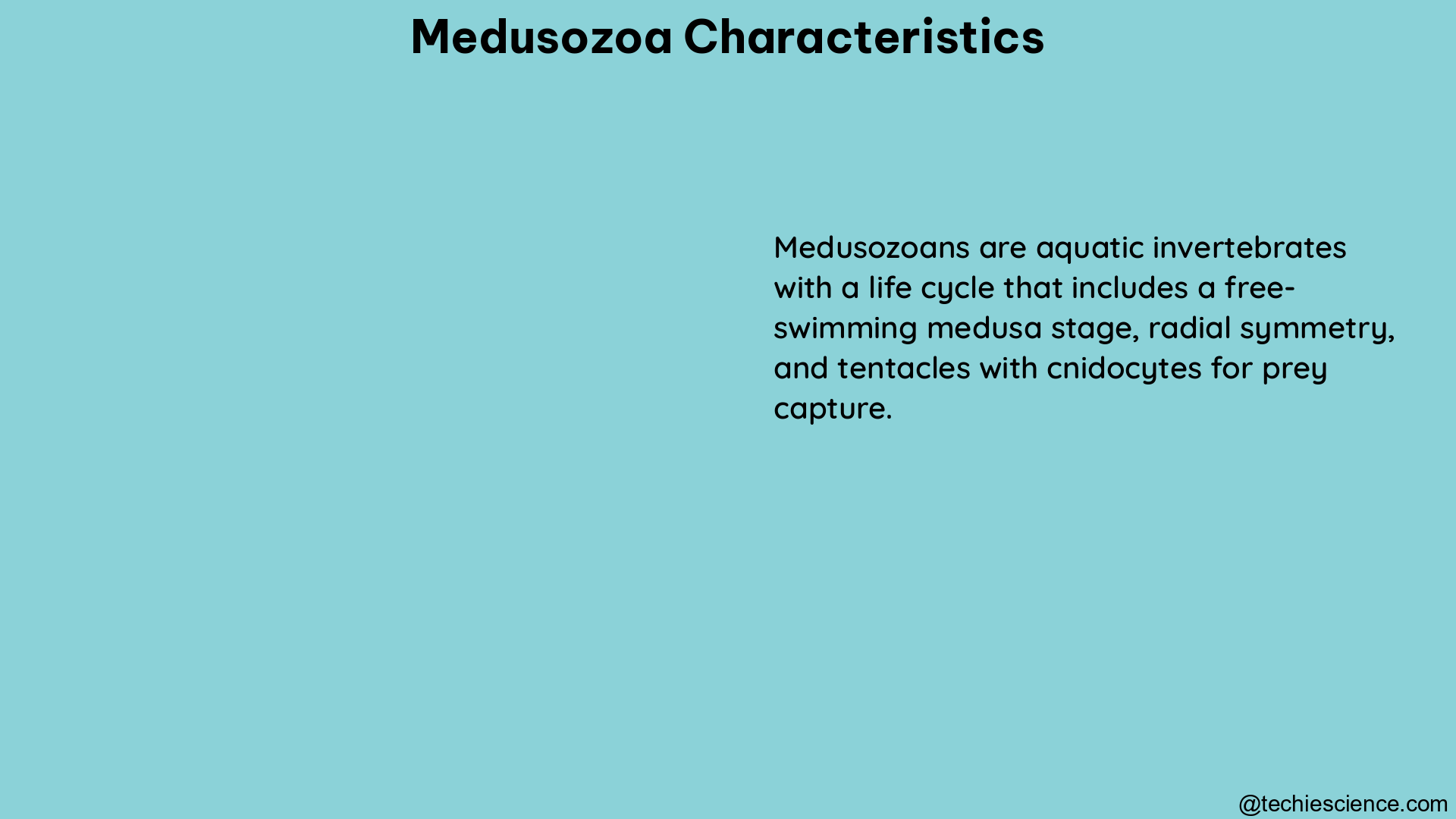Medusozoa, a diverse group of cnidarians, encompasses a wide range of organisms, including jellyfish, hydras, and corals. These captivating creatures are characterized by a remarkable diversity in their gut anatomies and digestive mechanisms, making them a fascinating subject of study for biologists and naturalists alike.
Monophyletic Lineage and Taxonomic Diversity
The Medusozoa are a monophyletic group, meaning they share a common ancestor and include the clades Staurozoa, Cubozoa, Scyphozoa, and Hydrozoa. Additionally, the Myxozoa, a group of parasitic organisms, are considered a sister group to the Medusozoa. This taxonomic diversity within the Medusozoa reflects the remarkable evolutionary adaptations and ecological roles these organisms have developed over millions of years.
Mitogenome Phylogeny and Genomic Characteristics

A study analyzing the mitogenome phylogeny of Medusozoa revealed several intriguing insights. By sequencing and assembling eight mitogenomes from three classes (Cubozoa, Hydrozoa, and Scyphozoa), the researchers found that all reconstructed mitogenomes shared the typical 13 mitochondrial protein-coding genes and two ribosomal genes characteristic of the Medusozoa. Interestingly, the non-cubozoan mitogenomes were all linear and had the expected gene orders, while the arrangement of genes in the fragmented Cubozoa mitogenome differed from other Cubozoa mitogenomes. This suggests that the Cubozoa class has undergone more significant genomic rearrangements compared to the other medusozoan classes.
Species Richness and Biogeographic Patterns
The distribution and species richness of Medusozoa are influenced by a variety of factors, as demonstrated by a study on marine Hydrozoa. This class of Medusozoa exhibits the highest species richness and distribution in tropical and subtropical regions, with a decline towards the poles. The researchers found that life cycle strategy and socioenvironmental and spatial criteria play a crucial role in shaping the species richness and distribution patterns of Hydrozoa.
For instance, the Hydrozoa class includes both solitary and colonial species, with the colonial forms often dominating in tropical and subtropical regions. The colonial growth form allows for more efficient resource acquisition and defense, contributing to the higher species richness observed in these regions. Additionally, the availability of suitable habitats, such as coral reefs and other marine ecosystems, can significantly influence the distribution and diversity of Hydrozoa.
Gut Anatomy and Digestive Mechanisms
The Medusozoa exhibit a remarkable diversity in their gut anatomies and digestive mechanisms, as revealed by a study on the jellyfish species Rhizostoma pulmo. Using a novel endocast technique, researchers were able to provide a 3D quantitative analysis of the gastrovascular system in this species, leading to an unexpected discovery – the presence of a through-gut in Cnidaria.
The gastrovascular system of Rhizostoma pulmo is highly complex, consisting of a central stomach surrounded by a network of radial canals and tentacles. This intricate system plays a crucial role in capturing and digesting prey, showcasing the adaptations Medusozoa have developed to thrive in their aquatic environments.
Ecological Significance and Evolutionary Adaptations
Medusozoa occupy a vital role in marine ecosystems, serving as both predators and prey. Their diverse gut anatomies and digestive mechanisms allow them to exploit a wide range of food sources, from microscopic plankton to larger prey. This versatility in feeding strategies contributes to their ecological success and the maintenance of balanced marine food webs.
Moreover, the evolutionary adaptations of Medusozoa, such as the development of complex gastrovascular systems and the ability to alternate between benthic and pelagic life stages, have enabled them to colonize a variety of aquatic habitats, from shallow coastal waters to the open ocean.
Conclusion
The Medusozoa, a captivating group of cnidarians, continue to fascinate scientists with their remarkable diversity, intricate gut anatomies, and adaptations to their aquatic environments. By unraveling the mysteries of their characteristics, we gain a deeper understanding of the evolutionary processes that have shaped these enigmatic organisms and their crucial roles in marine ecosystems.
References:
- Life cycle strategy, species richness and distribution in marine Hydrozoa, Cnidaria, Medusozoa
- Quantifying biodiversity: Procedures and pitfalls in the measurement and comparison of species richness
- An unexpected through-gut in cnidaria
- Revisiting mitogenome evolution in Medusozoa with eight new mitochondrial genomes
- Medusa – an overview
- Phylogenomics provides a robust topology of the major cnidarian lineages and insights on the origins of key organismal traits

Hi….I am Anushree Verma, I have completed my Master’s in Biotechnology. I am a very confident, dedicated and enthusiastic author from the biotechnology field. I have a good understanding of life sciences and great command over communication skills. I thrive to learn new things every day. I would like to thank this esteemed organization for giving me such a great opportunity.
Let’s connect through LinkedIn- https://www.linkedin.com/in/anushree-verma-066ba7153